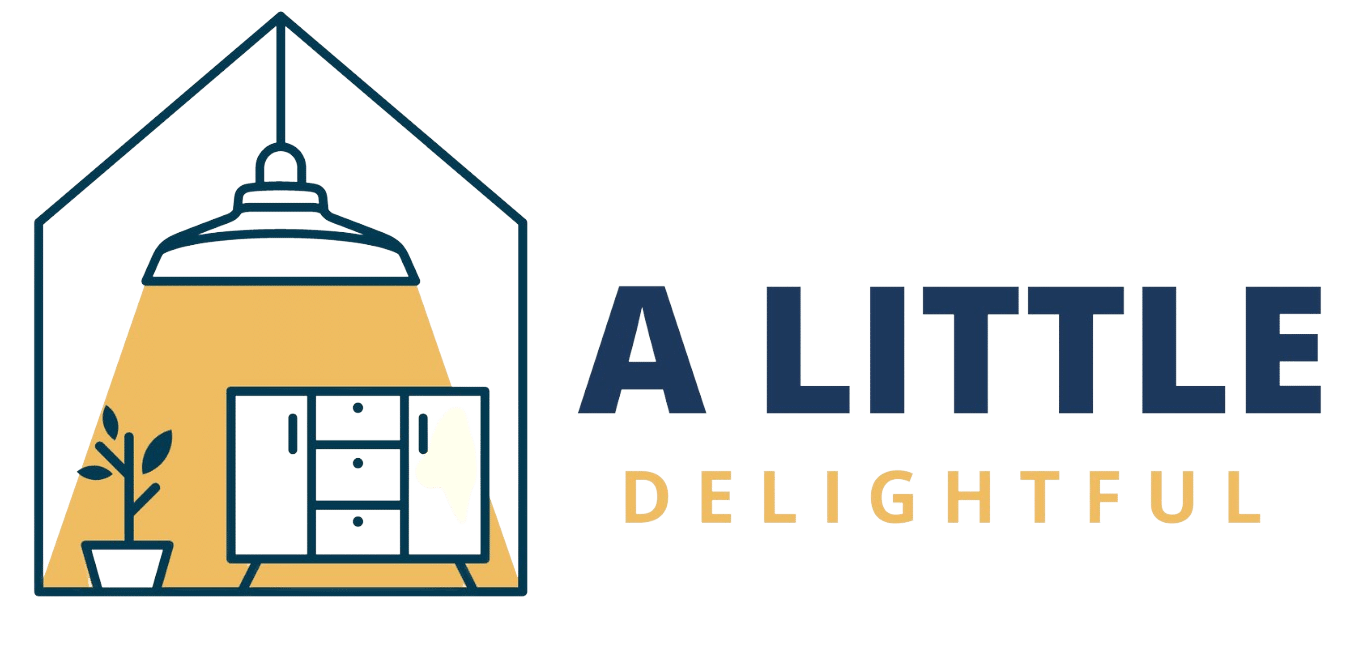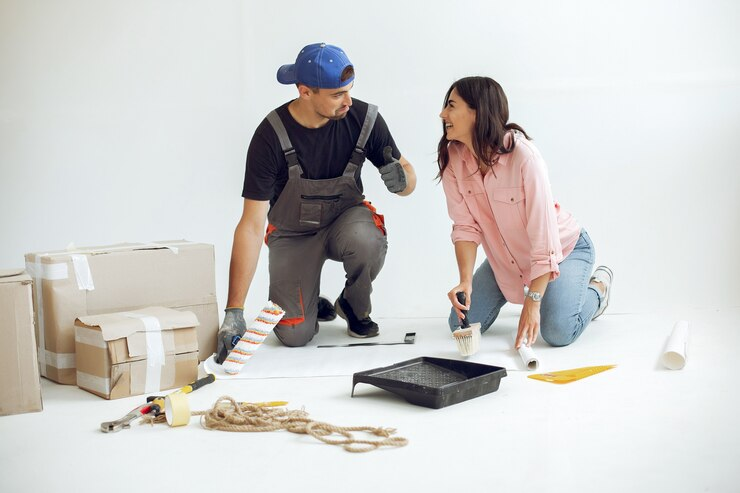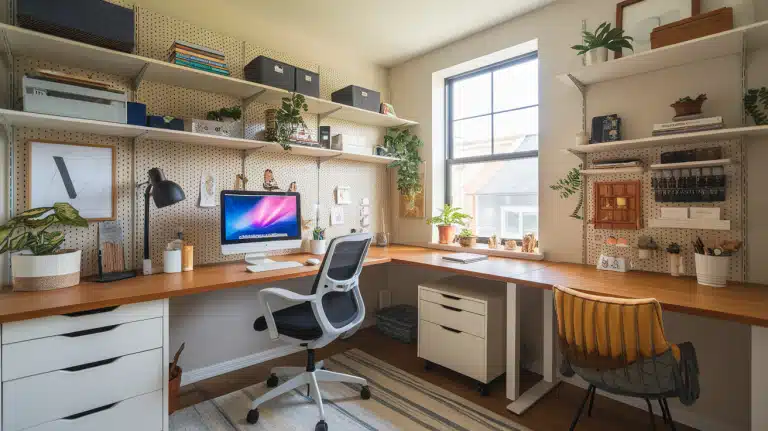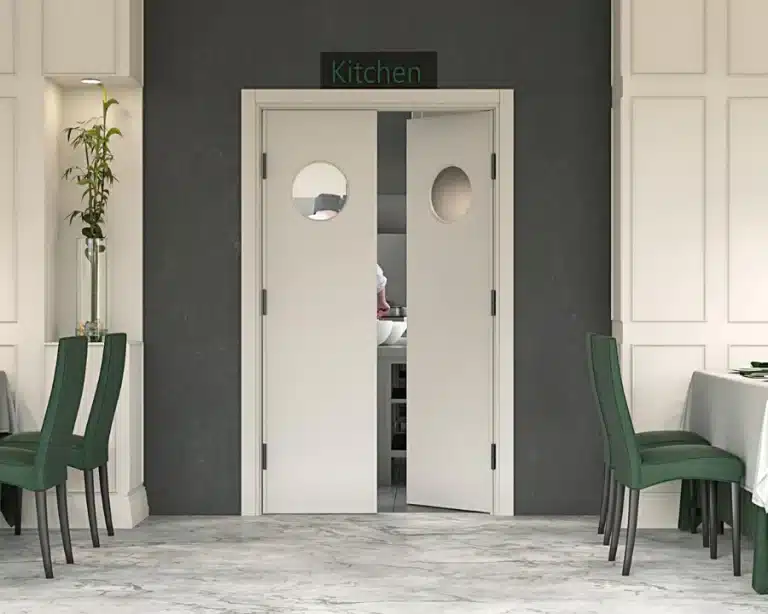Proven Home Improvement Tips to Boost Comfort and Value
Home improvement projects can significantly enhance the comfort, functionality, and value of a home.
Whether you are a seasoned DIY enthusiast or a homeowner looking for professional help, understanding the most effective tips and strategies is crucial.
This article provides a comprehensive guide to the top home improvement tips, addressing common questions and offering practical advice for various aspects of home renovation and maintenance.
How Can I Increase the Value of My Home?

Increasing the value of a home can be achieved through various strategic improvements and renovations.
These enhancements not only make the property more appealing to potential buyers but also ensure a higher return on investment (ROI).
Below are some effective methods to increase home value:
Fencing Improvements
Installing high-quality aluminum fencing can enhance both the security and curb appeal of your home.
These fences are known for their durability and low maintenance, making them a valuable addition.
A well-designed fence not only defines your property but also boosts its overall marketability.
Bedroom Upgrades
Upgrading your bedroom with customized picture blankets can add a unique charm and comfort to the space.
These blankets not only provide warmth but also serve as a personal statement, making your home more appealing to potential buyers.
Small, thoughtful upgrades in the bedroom can contribute significantly to the overall value of your home.
Kitchen Renovations
The kitchen is often considered the heart of the home. Upgrading appliances, installing new countertops, and modernizing cabinetry can significantly boost a home’s value.
According to Remodeling Magazine’s Cost vs. Value Report, a minor kitchen remodel can recoup approximately 77.6% of its cost.
Bathroom Upgrades
Modernizing bathrooms with new fixtures, tiles, and efficient lighting can enhance the overall appeal of a home.
You may have experts plan and do it for you as bathroom remodeling in Carlsbad CA.
Adding an additional bathroom or a half-bath can also substantially increase value.
Upgrading to hardwood floors or high-quality tiles can add a touch of luxury to a home.
Carpeting should be clean and in good condition, as worn or outdated flooring can detract from a home’s value.
Neutral Paint Colors
Painting walls in neutral colors can make a home more universally appealing.
Neutral tones provide a blank canvas for potential buyers, allowing them to envision their own style in the space.
Modern Lighting
Updating lighting fixtures to more contemporary styles can brighten up a home and make it feel more inviting.
Energy-efficient LED lighting is also a popular choice for its longevity and cost savings.
| Smart Reminder: Evaluate your home’s maintenance priorities by distinguishing needs from wants, using your home inspection report and a checklist to address any overlooked repair recommendations. |
What Permits Do I Need for Home Improvement Projects?

Home improvement projects often require permits to ensure that the work complies with local building codes and regulations.
The specific permits needed can vary depending on the scope and nature of the project, as well as the jurisdiction in which the property is located.
Below is a list of common home improvement projects and the typical permits required for each:
Building Permit
A building permit is generally required for any major structural changes, additions, or new construction, such as room additions, garage construction, decks and porches, or major renovations that alter the structure of the home.
Electrical Permit
An electrical permit is necessary for any work involving the home’s electrical system, including installing new electrical circuits, upgrading electrical panels, and adding new outlets or lighting fixtures.
Plumbing Permit
A plumbing permit is required for any modifications to the plumbing system.
Common projects that necessitate this permit include installing new plumbing fixtures, replacing or relocating pipes, and adding a new bathroom or kitchen.
Mechanical Permit
It is needed for any work involving heating, ventilation, and air conditioning systems.
This includes installing or replacing HVAC units, adding ductwork, and installing gas lines.
Roofing Permit
Often required for roof replacements or significant repairs. This ensures that the roofing work meets safety and quality standards.
Demolition Permit
Required for the demolition of any existing structures or parts of structures. This is to ensure safe and environmentally responsible demolition practices.
Fence Permit
Some jurisdictions require permits for the installation or replacement of fences, particularly if they exceed a certain height or are located near property lines.
Zoning Permit
A zoning permit may be necessary for projects that change the use of a property or affect its compliance with local zoning laws.
This includes converting a garage into a living space, adding an accessory dwelling unit (ADU), or changing the use of a building from residential to commercial.
| Pro Insight: Consider the savings and sense of accomplishment that come with DIY projects, but remember that hiring a professional may ultimately save you time and prevent costly mistakes. |
What Are the Most Effective Energy-Saving Home Improvements?
Energy-saving home improvements are vital for reducing utility costs and minimizing environmental impact.
Implementing effective strategies can significantly enhance a home’s energy efficiency.
Proper insulation is essential for maintaining a consistent indoor temperature and reducing the need for heating and cooling.
Key areas to focus on include the attic, where adding insulation can prevent heat loss in winter and keep the home cooler in summer; exterior walls, where insulation can greatly reduce energy consumption; and floors, particularly those above unheated spaces like garages or basements, where insulation can improve overall energy efficiency.
Windows and Doors
Upgrading windows and doors is an effective way to prevent drafts and improve thermal performance.
Options include installing double or triple-glazed windows to reduce heat transfer, applying weatherstripping around doors and windows to seal gaps and prevent air leaks, and replacing old doors with energy-efficient models to enhance insulation.
Heating and Cooling Systems
Modernizing heating and cooling systems can result in significant energy savings.
Upgrading to high-efficiency HVAC systems can reduce energy consumption, while installing programmable or smart thermostats allows for better control of heating and cooling, optimizing energy use.
Additionally, regular maintenance of HVAC systems is crucial for improving efficiency and extending lifespan.
Lighting
Switching to energy-efficient lighting options is an effective way to reduce electricity usage.
Replacing incandescent bulbs with LED bulbs can lower energy consumption and offer a longer lifespan.
Installing motion sensors in less frequently used areas ensures lights are only on when needed while maximizing natural light through strategic window placement and skylights can further reduce the reliance on artificial lighting.
| Smart Investment Insight: Replacing your garage door is a worthwhile investment that will pay off over time. It’s relatively affordable compared to other upgrades, and you can expect to recover 95-100% of your costs. |
What Are the Top Design Trends for Kitchens and Bathrooms?
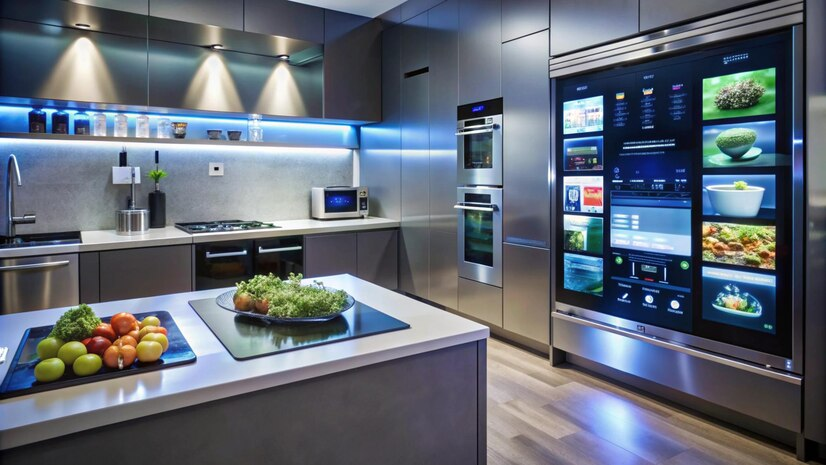
In recent years, kitchen and bathroom design trends have evolved to reflect a blend of functionality, aesthetics, and sustainability.
These trends are driven by advancements in technology, changing lifestyle preferences, and a growing emphasis on eco–friendly materials.
Open Shelving and Minimalist Design
Open shelving has become increasingly popular in kitchens, offering a modern and airy feel.
This design choice allows easy access to frequently used items and encourages a clutter–free environment.
Minimalist design principles, characterized by clean lines, neutral color palettes, and a lack of excessive ornamentation, are also prevalent in both kitchens and bathrooms.
Smart Technology Integration
The integration of smart technology is a significant trend in kitchen and bathroom design.
Smart appliances, such as refrigerators with touch screens and voice-activated faucets, enhance convenience and efficiency.
In bathrooms, smart mirrors with built-in lighting and defogging capabilities, as well as digital showers that allow for precise temperature control, are becoming standard features.
Sustainable and Eco-Friendly Materials
Sustainability is a key consideration in modern home design. In kitchens, materials such as recycled glass countertops, bamboo flooring, and energy-efficient appliances are favored.
Bathrooms are increasingly using water-saving fixtures, such as low-flow toilets and faucets, and sustainable materials like reclaimed wood and recycled tiles.
Bold Colors and Patterns
While neutral tones remain popular, there is a growing trend towards incorporating bold colors and patterns in kitchen and bathroom designs.
In kitchens, this may include vibrant backsplashes, colorful cabinetry, and statement-making countertops.
Bathrooms embrace patterned tiles, bold wallpaper, and colorful vanities to create visually striking spaces.
| Designer’s Secret: To achieve a polished and professional look for your remodeling project, it’s essential to involve a designer along with an architect and general contractor. |
Take Action to Enhance Your Home’s Value and Comfort
Implementing these home improvement tips can significantly boost your home’s value, energy efficiency, and overall comfort.
Whether you’re planning a renovation or routine maintenance, each step you take will contribute to a more functional and attractive living space.
Start making impactful changes today and enjoy the long-term benefits they bring.
